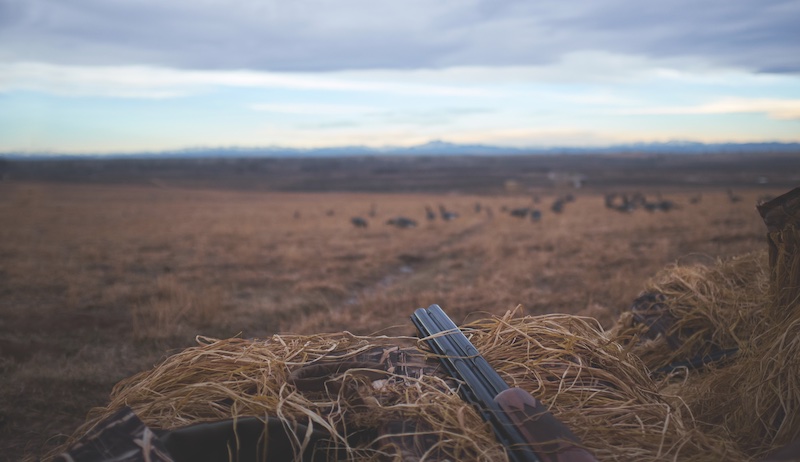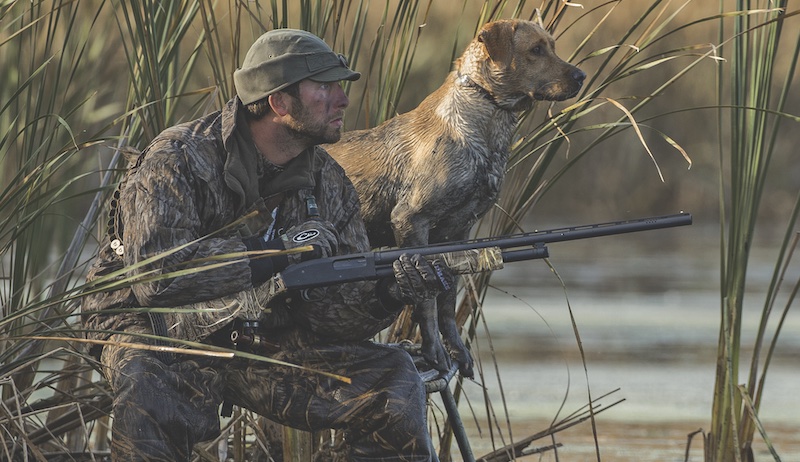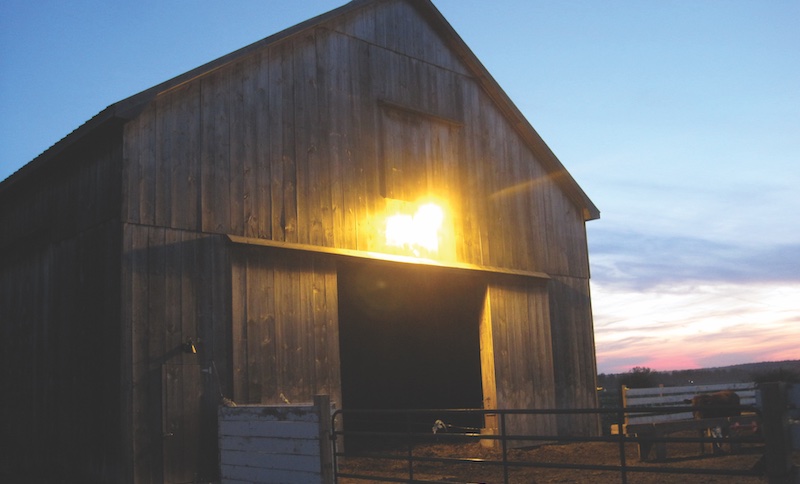
As a frequent contributor to many national firearms magazines, writing about guns is my passion and comes quite easily to me. However, writing about gun knowledge for a widely varied audience like that of Hobby Farms—some of whom are very familiar with guns on the farm, and others who have likely never even shot a firearm—is somewhat more difficult.
The key is to give basic information that beginners need, while not lulling more experienced gun owners to sleep and having them simply turn the page. With that said, here goes.
Tools, Not Toys
Guns are utilitarian tools that have many appropriate—and, obviously, some inappropriate—uses. A gun is particularly handy in a rural farm environment for a variety of reasons, which we’ll take a quick look at.
First, the right gun can be a very handy tool for protecting livestock and poultry from four-legged predators that can wipe out your farm quickly if left unchecked. From possums and raccoons to coyotes, bobcats, mountain lions and even wolves, having a gun and knowing how to use it safely can be the difference between losing stock and keeping your farm intact.
Guns can also be important tools for protecting you and your family. The old saying, “God made man; Samuel Colt made men equal,” is an elaborate way of saying that common people with less strength can protect themselves against far bigger and stronger aggressors with the help of a firearm. Many states allow the use of a firearm for self-defense if a person’s life is endangered.
Lastly, a gun can be handy on the farm for putting meat in the freezer, whether domestic or wild game.
From dispatching lambs or pigs for butchering to taking down a deer, antelope or elk, a firearm gives farmers and other rural residents the best opportunity for killing animals quickly and humanely compared to other methods.

Is a Gun Right for Your Farm?
This is a good time to interject that guns aren’t for everyone. The Second Amendment to the U.S. Constitution guarantees the right to bear arms for every lawful citizen who is not otherwise disqualified by being convicted of a felony or other extenuating circumstances as noted under federal law. However, some people just aren’t comfortable with the thought of owning a gun or are afraid of guns.
That’s fine. It’s certainly a personal choice.
But note that more and more people are buying guns than ever before. In fact, during the 2020 pandemic year, more guns were sold by the middle of October than in any other entire year since records have been kept, according to the FBI’s National Instant Criminal Background Check System. And millions of those guns were sold to brand-new gun owners.
Many states have different laws regulating the ownership and use of some types of firearms. So, learn what your state’s laws have to say before jumping into the gun ownership arena.
Read more: Not into guns? A crossbow might be the right hunting tool for you!
Farm Gun Safety
In any discussion of guns and gun usage—whether on the farm or elsewhere—firearm safety should be at the top of the list of topics. New and expert gun owners who always follow four primary rules will stay safe and never accidentally hurt themselves or anyone else with a firearm.
The four rules are as follows.
- Always keep your gun pointed in a safe direction. Why is this so important? If your gun is always pointed in a safe direction, even if you accidentally fire it by violating the next rule, nobody will be hurt.
- Keep your finger off the trigger until ready to shoot. If you don’t pull the trigger, your properly functioning firearm won’t shoot. So if you always keep your finger off the trigger until you are ready to shoot, you greatly diminish the chance of an accident.
- Treat every gun like it is loaded. Assuming a gun is unloaded can cause a catastrophe. Always treating every gun like it is loaded—which means pointing it in a safe direction and keeping your finger off the trigger until you are ready to shoot—will ensure that a loaded gun you thought was unloaded still can’t accidentally hurt anyone.
- Know your target and what is beyond. Being sure what you think you are shooting at is exactly what you are shooting at is necessary before firing any gun. And knowing what is beyond that target should the bullet miss or pass through the initial target is critical to being a safe, responsible gun owner and shooter.
Training
This brings us to the training aspect. To properly and safely use firearms for whatever purpose you choose, training is important. And it goes beyond just going to the range and firing five or six rounds, then calling it good.
Frequent training with your firearm will make you not only a better shot, but also a safer, more responsible gun owner. Don’t have an experienced shooter friend to help you get started? There are plenty of professional firearms trainers whose services are well worth the cost.
Storage
Lastly, storing firearms safely when not in use is another critical safety aspect of responsible gun ownership. Many storage options are available to keep you and your family safe. (See “Safe Storage,” below.)
Let’s take a look at the three kinds of modern firearms: shotguns, rifles and handguns. (We’ll skip muzzle-loading arms here because their utility on the farm is marginal, at best.)

Shotguns
Shotguns are one of the most versatile types of firearms you can have around your farm. They shoot shotshells, which hold a number of pellets instead of just one projectile, like a rifle or a handgun.
That makes it easier to hit what you are shooting at without being a crack shot.
Shotguns are useful for nearly all purposes on the farm or in rural areas. They’re great for protecting livestock, as they’ll work well on raccoons, coyotes or nearly anything else stalking your herd. Loaded with birdshot, they’re excellent for bagging quail or pheasants for the table. And, they shoot rifled slugs, giving you what you need to take down a deer on the back 40.
Lastly, loaded with buckshot, they’re among the best home-defense guns, especially for beginners. In fact, many companies make models specifically for home-defense purposes.
The four shotgun types are single-shot, pump, semi-automatic and double-barrel. Pumps and semi- autos are the easiest to use, and pumps usually fall at the lower end of the price range.
You can get a quality, brand- new pump shotgun for well under $400 from companies such as Mossberg and Stoeger.
Read more: It’s essential to care for your firearms for safe and proper use.
Rifles
Rifles are also quite useful and come in two broad types: rimfire and center-fire. Rimfire rifles are generally .22 caliber and, while lethal, have the lowest amount of energy behind their projectiles.
However, .22 rifles are much quieter than center-fire rifles. They can easily dispatch varmints or predators, or get a rabbit or squirrel for the stew pot. You can even put down lambs or pigs for butchering.
On the other hand, rimfire rifles don’t produce the energy needed to ethically and cleanly harvest deer. And while sometimes used for home defense, they aren’t really ideal for that purpose.
Center-fire rifles run the gamut from bolt-action to semi-auto to pump to single-shot. Bolt-action rifles are popular for harvesting deer, elk and other big game, but have little utility for home defense. They’ll dispatch a predator for sure but are overkill on varmints such as possums and raccoons.
Pump and single-shot rifles are similar. With their high-velocity rounds, they are great for hunting big game and dispatching livestock for butchering, but aren’t ideal for killing skunks and protecting your home and family.
Semi-Auto Rifles
Semi-auto rifles are much more versatile. Here, we’re talking about the AR-15-style rifles that some call “assault rifles.” Actually, they aren’t assault rifles, as true assault rifles are fully-automatic. And the “AR” in AR-15 doesn’t stand for “assault rifle” but for “ArmaLite Rifle,” giving props to the company that first made them.
These rifles fire one round with each pull of the trigger, just like bolt-actions, but eject the fired brass and load another shell for a quick follow-up shot.
Semi-auto rifles are lightweight, short for easy handling, accurate and (with the right ammo) plenty good for killing a deer or antelope. They take out predators quite well. And, with extended magazines, they hold plenty of rounds to give you several shots.
They are also quite useful for home defense when using the right ammunition. Many companies make such semi-autos, and new ones can be found for under $500 if you look hard enough.
Top makers include Smith & Wesson, Ruger, Savage, Rock River and Sig Sauer.
Handguns
Handguns are typically either revolvers or semi- automatic pistols. Revolvers have a cylinder that you load cartridges into. When you fire one, the cylinder “revolves” and puts the next cartridge in place to be fired.
Semi-auto pistols are made with a removable magazine held within the pistol’s grip. When a shot is fired, the shell is ejected and the pistol automatically loads the next round on top of the magazine into the chamber. Each pull of the trigger results in a shot until the magazine and chamber are emptied.
Handguns are also quite useful, but certainly not an absolute necessity around the farm. Best used for home defense (since shots there would be at much closer ranges), they’re hard to use for dispatching varmints since they aren’t easy to shoot accurately without quite a bit of practice. And they don’t have the power or accuracy needed to cleanly harvest big game.
If home defense or concealed carry is a priority, look into a semi-auto pistol or revolver. But if you just need one all-around gun for the farm, this probably isn’t it.
Top makers include Smith & Wesson, Springfield, Ruger, Mossberg, Colt, Kimber, Sig, Taurus, Beretta and FN.
Air Guns
While not technically firearms, a modern air gun can be powerful enough to come in useful around the farm. They’re very quiet. You can easily dispatch pests in more urban areas or where shooting real “firearms” is prohibited.
Some are also very powerful, shooting pellets at well over 1,000 feet per second.
I have a Gamo model that I use to kill pests bothering the chickens and to keep squirrels away from my wife’s tomato plants. It’s accurate, quiet and very deadly. Because I’m in the city limits where shooting a firearm is prohibited, I use it frequently with good success.
Top airgun makers include Gamo, Crosman, Benjamin, Beeman and Umarex.

Making a Choice
In the end, it’s up to you whether you choose to keep a firearm on your farm or not. As discussed, they serve many different purposes and can be used safely and efficiently if you follow safety practices and practice regularly.
Most experienced firearm owners already know what works best for them. They might simply be looking to add another shotgun or handgun to their collection. But for newbies just considering a first gun for the farm, there are many things to consider.
If I were asked to suggest one gun to a new rural gun owner that would serve all of his or her purposes quite well, I’d suggest a 12-gauge pump shotgun. It’s easy to use and doesn’t require great marksmanship skills. You can also load it with a variety of ammunition, from birdshot to buckshot to slugs, adding to its versatility.
Mossberg and Remington are two of the top pump shotgun makers. Mossberg’s extensive Model 500 series is one of the best-selling pump shotgun lines in the country. And Remington’s venerable Model 870 can serve every purpose under the sun, from harvesting ducks and geese to use on the battlefield.
Whatever you choose or don’t choose, always put safety first. Guns are useful tools on the farm, as long as they are used legally and safely.
Sidebar: Safe Storage
Safe storage of firearms is just as critical as knowing and practicing the four rules of gun safety. However, how you should store your guns largely depends on who has access to your home, their ages and their knowledge of firearms.
Keeping a gun unloaded and locked up in a gun safe renders it virtually impossible to access quickly in a farm emergency. But it’s also the best way to render it safe from those who shouldn’t have access.
At the other end of the spectrum is the loaded shotgun propped up behind the bedroom door in a household where there are only one or two residents who know it’s there, know it’s loaded and know how to use it.
For safety’s sake, it’s always better to render your firearm safer than you think you’ll need it to be for your situation than to leave a gun where it can be accessed by an unauthorized person who might not know how to use it properly. You’ll need to consider your own unique situation when making a decision concerning this important matter.
Once you decide, do a quick internet search for “gun storage” to find dozens of different kinds of products. They range from conventional gun safes to a wide variety of other storage solutions designed to help you keep your guns safe and secure.
You’ll likely find the solution that fits your situation pretty easily.
This article originally appeared in the January/February 20201 issue of Hobby Farms magazine.




